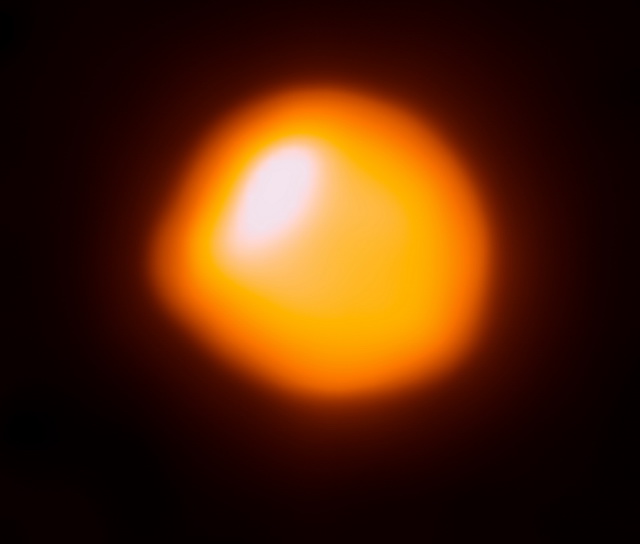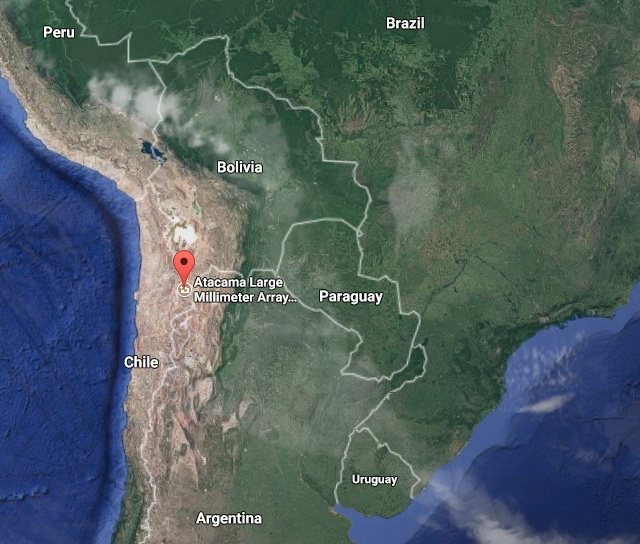A day or two ago I came across this article
Incredible image of the giant ‘cannibal’ Betelgeuse star | Daily Mail Online
which contained this wonderful picture, the highest resolution image of Betelgeuse obtained so far:
Now this article was found in one of our national newspapers, one much loathed by liberals (in the American sense of the word). Regardless of political leanings, as always with any science article in the popular press, I looked to the original source. This was European Southern Observatory (About ESO | ESO United Kingdom), with its very high resolution telescope ALMA, the Atacama Large Millimeter/submillimeter Array. Here it is, in Chile but close to where the country meets Bolivia and Argentina. (The administrative part is located further south, near the capital Santiago de Chile.)

The Daily Mail article did tell us that Betelgeuse is rotating much faster than expected for such a huge star, and that researchers think that it may have swallowed a companion star as it expanded. Following names and places:
Famous Red Star Betelgeuse is Spinning Faster than Expected; May Have Swallowed a Companion 100,000 Years Ago | McDonald Observatory
J. Craig Wheeler of The University of Texas at Austin . . . explained that the companion star, once swallowed, would transfer the angular momentum of its orbit around Betelgeuse to that star’s outer envelope , speeding Betelgeuse’s rotation. He estimates that the companion star would have had about the same mass as the Sun, in order to account for Betelgeuse’s current spin rate of 15 km/sec.
If Betelgeuse did swallow a companion star, it’s likely that the interaction between the two would cause the supergiant to shoot some matter out into space, and Knowing how fast matter comes off of a red giant star, about 10 km/sec, Wheeler said he was able to roughly estimate how far from Betelgeuse this matter should be today.
“And then I went to the literature, in my naiveté, and read about Betelgeuse, and it turns out there’s a shell of matter sitting beyond Betelgeuse only a little closer than what I had guessed.”
Infrared images taken of Betelgeuse in 2012 by Leen Decin of the University of Leuven in Belgium with the orbiting Herschel telescope show two shells of interacting matter on one side of Betelgeuse. Various interpretations exist; some say that this matter is a bow shock created as Betelgeuse’s atmosphere pushes through the interstellar medium as it races through the galaxy.
No one knows the origin with certainty. But “the fact is,” Wheeler said, “there is evidence that Betelgeuse had some kind of commotion on roughly this timescale” — that is, 100,000 years ago when the star expanded into a red supergiant.
Next, he says, they hope to probe Betelgeuse using a technique called “asteroseismology” — looking for sound waves impacting the surface of the star, to get clues to what’s happening deep inside its obscuring cocoon. They will also use the MESA code (what’s that?) to better understand what would happen if Betelgeuse ate a companion star.
* * * * * * *
Betelgeuse is nearing the time when its core will collapse and it will explode as a supernova. That could be in a million year’s time, but it could be much sooner. If it does, while still so close to the Solar System, the supernova will be easily visible in bright daylight. Maybe the sight of an astronomer’s lifetime — but it will be the ruination of a wonderful constellation.




Comments